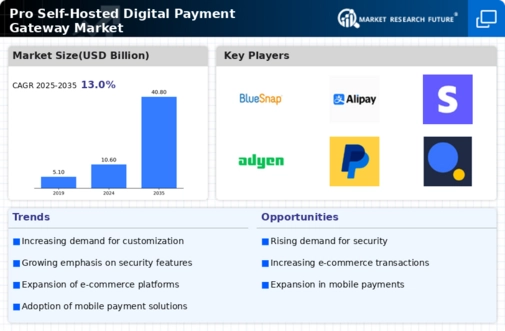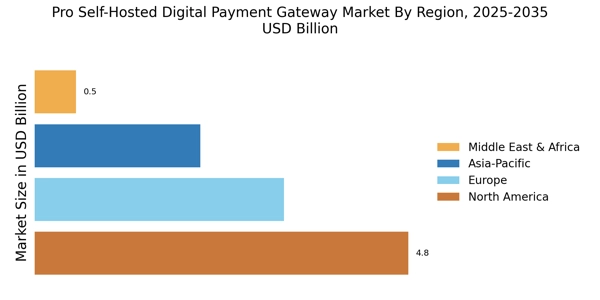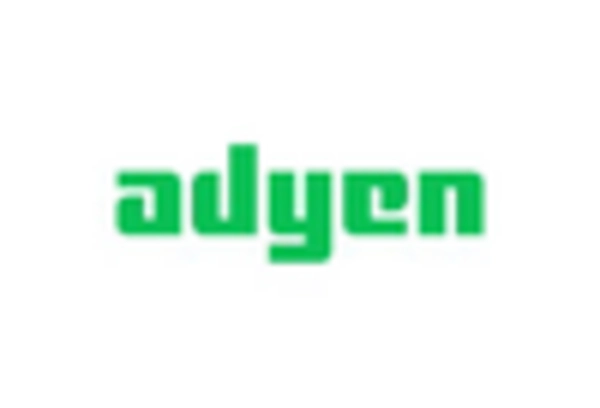Growing E-commerce Adoption
The Pro Self-Hosted Digital Payment Gateway Market is experiencing a surge in demand due to the rapid adoption of e-commerce platforms. As more businesses transition to online sales, the need for reliable and efficient payment solutions becomes paramount. In 2025, e-commerce sales are projected to reach approximately 6 trillion USD, indicating a robust market for digital payment solutions. This trend suggests that businesses are increasingly seeking self-hosted payment gateways to maintain control over their transactions and customer data. The ability to customize payment solutions to fit specific business needs further enhances the appeal of self-hosted gateways, positioning them as a preferred choice for many online retailers.
Regulatory Compliance Requirements
The Pro Self-Hosted Digital Payment Gateway Market is significantly influenced by the evolving landscape of regulatory compliance. As governments worldwide implement stricter regulations regarding data protection and financial transactions, businesses are compelled to adopt payment solutions that ensure compliance. Self-hosted payment gateways offer enhanced control over data management, allowing businesses to align their operations with regulations such as GDPR and PCI DSS. This compliance not only mitigates risks associated with data breaches but also fosters consumer trust. The increasing emphasis on regulatory adherence is likely to drive the demand for self-hosted solutions, as businesses seek to avoid penalties and maintain their reputations.
Increased Focus on Customer Experience
The Pro Self-Hosted Digital Payment Gateway Market is increasingly driven by the need to enhance customer experience. Businesses are recognizing that a smooth and efficient payment process is crucial for customer satisfaction and retention. Self-hosted payment gateways allow for greater customization of the payment interface, enabling businesses to create a user-friendly experience that aligns with their brand identity. This focus on customer experience is supported by data indicating that 70% of consumers are willing to abandon a purchase if the checkout process is too complicated. As businesses strive to improve their payment processes, the demand for self-hosted solutions that prioritize customer experience is likely to grow.
Rising Consumer Preference for Security
In the Pro Self-Hosted Digital Payment Gateway Market, consumer concerns regarding security are paramount. With the increasing frequency of cyberattacks and data breaches, customers are becoming more discerning about how their payment information is handled. Self-hosted payment gateways provide businesses with the ability to implement robust security measures tailored to their specific needs. This customization can include advanced encryption techniques and fraud detection systems, which are essential in safeguarding sensitive data. As consumers prioritize security in their online transactions, businesses that adopt self-hosted solutions may gain a competitive edge by demonstrating their commitment to protecting customer information.
Technological Advancements in Payment Solutions
The Pro Self-Hosted Digital Payment Gateway Market is witnessing a wave of technological advancements that are reshaping payment processing. Innovations such as artificial intelligence, machine learning, and blockchain technology are being integrated into payment gateways, enhancing their functionality and efficiency. These advancements enable businesses to offer seamless payment experiences, reduce transaction times, and improve fraud detection capabilities. As technology continues to evolve, self-hosted payment gateways that leverage these innovations are likely to attract more businesses seeking to enhance their payment processes. The integration of advanced technologies may also lead to cost reductions, further incentivizing the adoption of self-hosted solutions.


















Leave a Comment